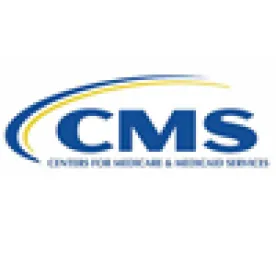On November 2, 2017, CMS published its final rule (the “Final Rule”) on the 2018 Quality Payment Program (“QPP”), authorized by the Medicare Access and CHIP Reauthorization Act of 2015 (“MACRA”). This final rule adopted many of the proposals put forward by CMS in its June 2017 proposed rule, summarized here. But the final rule is not merely a rehash of the proposed rule, and there are several features that may have important implications that should be on practitioners’ immediate radar. These include:
-
Practitioners’ 2018 performance (which will affect payment in 2020) will be evaluated not only as to quality, advancing care information, and practice improvement activities (the measurement areas for 2017), but also as to cost. Cost has always been a statutory basis for payment adjustment under the QPP’s Merit-based Incentive Payment System (“MIPS”), but CMS weighted this category at 0% in 2017 and had, in the proposed rule, contemplated doing the same in 2018. The final rule instead weights cost performance at ten percent of each practitioner’s MIPS score, to rise to thirty percent in 2019. The final performance category weights for 2018 are: quality – 50%; cost – 10%; improvement activities – 15%; and advancing care information – 25%. Practitioners now have extremely limited time to evaluate their past cost performance or implement any improvement efforts before cost performance takes on payment implications. Cost performance, therefore, is worth immediate attention in case any remedial efforts are necessary in the very short-term. In evaluating cost performance, practitioners should review their past Value-Based Payment Modifier performance to begin to evaluate their strengths, as well as potential areas for improvement.
-
Practitioners will be required to submit a full year of data related to quality performance for the purposes of MIPS-scoring, rather than the 90 days required in 2017. Many practitioners had hoped that CMS would continue the transitional 90-day policy and must now very quickly prepare to report on and maximize performance over a full year of data on quality. The final rule also finalized CMS’ proposal to raise the MIPS performance threshold from 3 points in 2017 to 15 points in 2018. Although this change, contemplated in the proposed rule, will increase practitioner burden in the coming year relative to this year, it still offers practitioners substantial flexibility.
-
As contemplated in the proposed rule, CMS will allow practitioners to affiliate into “virtual groups” for the 2018 performance year. Practitioners who make this election will have their data aggregated with other virtual group members for MIPS-scoring purposes. CMS has finalized very few limitations on virtual group affiliations, potentially allowing many practitioners to take advantage of this structure to overcome challenges related to accurate quality measurement for solo and small group practices. However, virtual group elections for the 2018 performance year must be made by December 1, 2017, leaving practitioners very little time to evaluate whether they wish to participate in a virtual group or to effectuate a decision to participate.
Practitioners who have not yet begun actively preparing long-term MIPS strategies could be caught off-guard by these new features.
Other features of the final rule do help to retain and enhance practitioner flexibility, especially for smaller practices. For instance, CMS finalized its proposal to change the low volume threshold from 100 Medicare patients or $30,000 in Part B billings to 200 Medicare patients or $90,000 in Part B billings, allowing more practitioners to avoid MIPS participation in 2018 than in 2017. CMS will also provide bonus points to MIPS-participating small practices – three points to practitioners in small practices that submit quality data, even if incomplete, and five points to the final scores of practitioners in small practices. CMS also finalized a hardship exception from the advancing care information category for small practices, in addition to allowing all practices to use 2014-certified electronic health record technology (“CEHRT”), and offering a bonus to all practices that used only 2015-CEHRT. CMS will also offer up to five bonus points to physicians who treat complex patients, as measured by HCC codes.
In addition to excluding more practitioners from MIPS by changing the low volume threshold, CMS predicts that more providers will qualify for Advanced Alternative Payment Models (“AAPM”) that will allow them to avoid MIPS participation. This prediction is based on the inclusion of the Medicare Shared Savings Program Track 1+ as an AAPM, as well as the reopening of applications for the Next Generation ACO Model and the Comprehensive Primary Care Plus program. However, the administration’s record of supporting the development of alternative payment models thus far has been mixed. For instance, CMS announced in August that it intends to limit the Comprehensive Care for Joint Replacement model and cancel the Cardiac Rehabilitation Incentive Payment Model. Therefore, the likely long term distribution of practitioners between the MIPS and AAPM tracks of the QPP is far from clear.
The Final Rule is a mixed bag for practitioners. While it retains some of the flexibility offered to providers in 2017 and provides some important flexibilities for small practices, the Final Rule is clearly beginning the process of increasing demands on practitioners associated with the QPP. The very short time frame that CMS has left providers to accommodate some of these demands is discouraging and lends credence to MedPAC’s recently expressed concern that the MIPS program will create significant practitioner burden associated with its complex reporting and scoring rules. In fact, the Final Rule did not address or mitigate either these concerns or MedPAC’s concerns about elements of the MIPS scoring structure that may lead to limited ability to detect meaningful performance differences and to inequitable scoring. While the administration is clearly actively pursuing MIPS implementation despite these concerns – and practitioners are well-advised to strategize accordingly – CMS’ failure to address MedPAC’s serious criticisms of MIPS may not bode well for the program’s longer term future.



 />i
/>i

